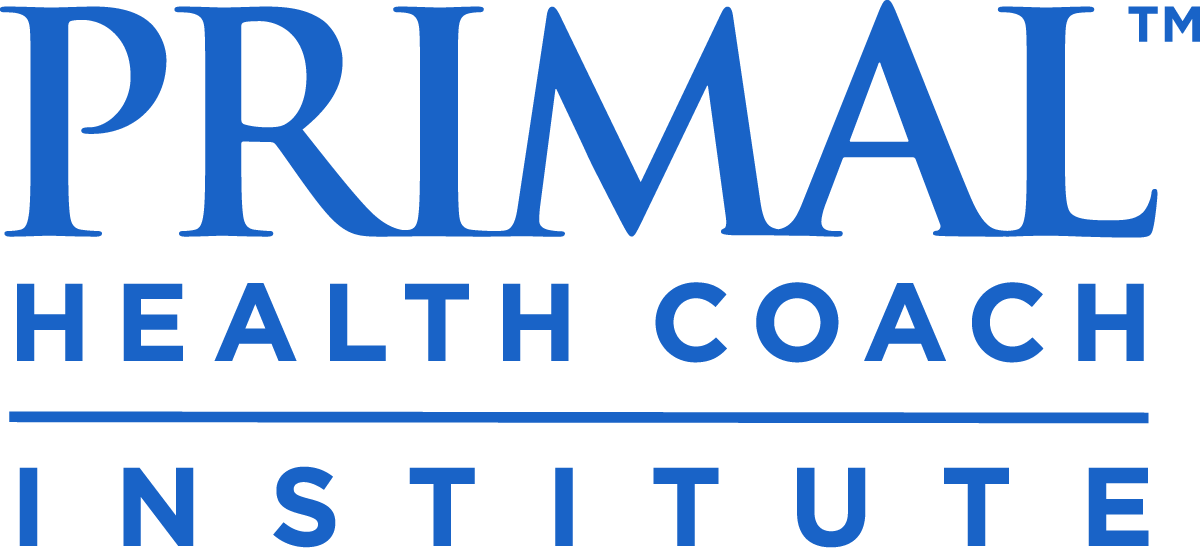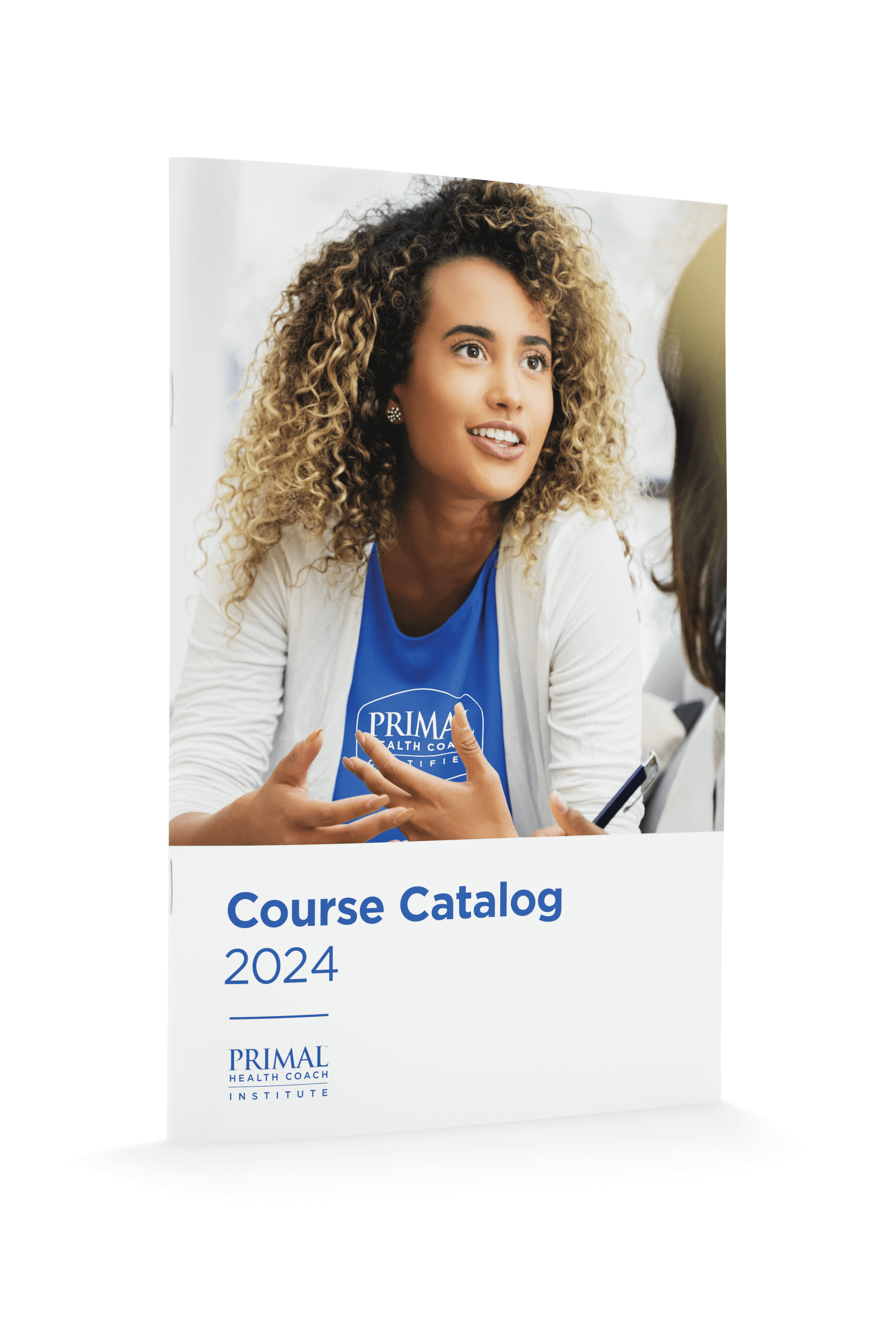Have you ever thought about creating your own health coach business cards? Carving out your niche in the health, wellness and fitness space can be challenging without the right marketing strategy and tools. Whether you’re a health coach, a life coach or a personal trainer, creating an eye-catching business card is an absolute must when attracting new clients to your business.
When almost 90% of all business cards end up in the trash, it’s essential that your business card stands out.
In this post we’ll share our top 8 tips on how to create your own winning health coach business cards, to help you hook new clients.
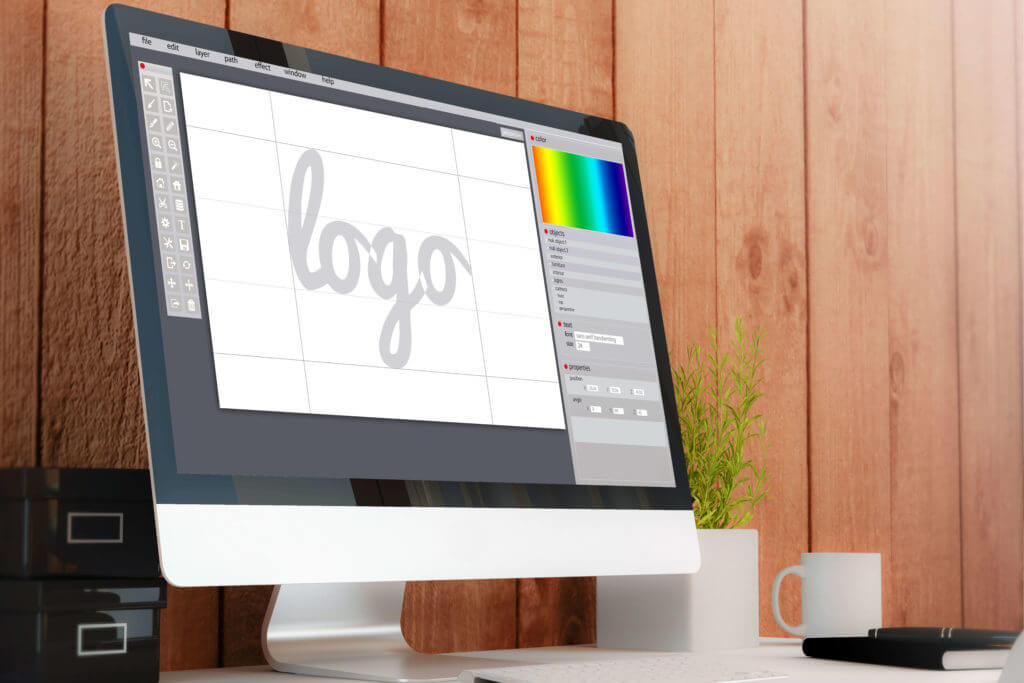
Health Coach Business Cards: What to Include
The goal of your business card is to attract a potential client into your inbound marketing funnel. To achieve this, your business card should contain the following 8 key elements:
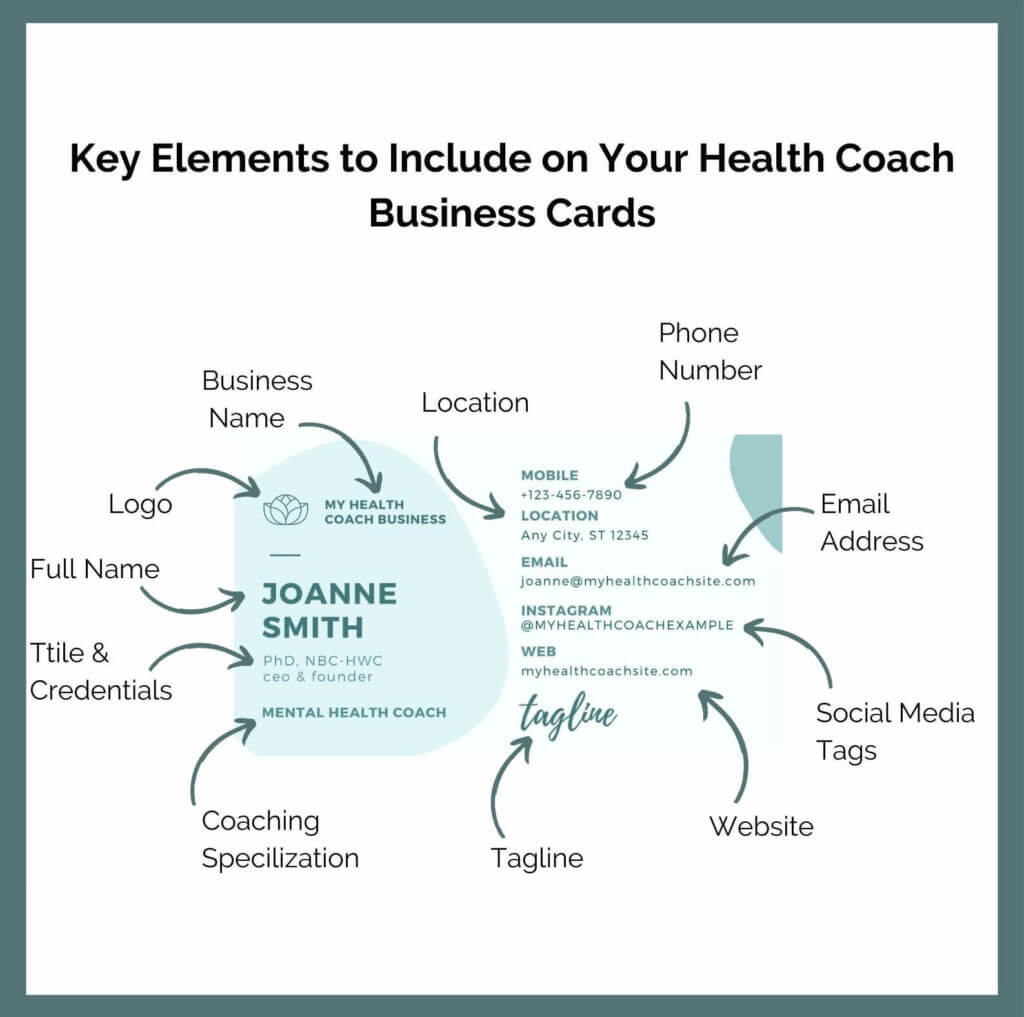
1. Full Name, Title and Credentials
Don’t be shy about including your qualifications on your business card. Your business card should include any coaching certifications as well as any degrees or diplomas you hold in the areas of health, wellness, medicine or fitness.
Here’s an example for you: Joanne Smith is a NBC-HWC certified health and wellness coach, who also holds a PhD is biochemistry. Therefore Joanne would write her name (and credentials) as follows:
Joanne Smith, PhD, NBC-HWC
By including PhD on her business card, Joanne will attract clients that are looking for a coach that can help them understand the research and the scientific studies associated with healthy living. And the addition of NBC-HWC will allow prospective clients and/or future employers to immediately recognize that Joanne has sat her National Board Certification as a Health and Wellness Coach.
2. Coaching Specialization
Niche marketing 101 is about specializing your services to the needs of your avatar client. If you haven’t quite pinned down your health coaching niche, it’s worth taking the time to do this. You can start by reflecting on your own health journey, and asking yourself the following questions:
- Have you overcome any challenges?
- What are you most passionate about?
- What is it about coaching that excites you?
The answers to these questions will help shape your client avatar and help you hone your coaching specialization.
Here’s a list of 13 health coaching niches you may like to consider:
- Weight Loss Specialist Coach
- Insulin Specialist Coach
- Women’s Nutrition Coach
- Senior’s Wellness Coach
- Hormonal Balance Coach
- Habit Change Specialist Coach
- Fitness Coach
- Metabolic Health Coach
- Mood Balance Coach
- Stress Management Coach
- Veterans Health Coach
- Mental Health Coach
- Lifestyle Coach
3. Business Name
A catchy business name is key to attracting your target audience, and should feature prominently on your business card.
Not sure of what to name your health coaching business? Here’s a comprehensive list of real health, wellness and fitness business names to inspire you.
Once you’ve come up with your business name, it’s a good idea to protect it legally. But first you should look into whether the domain you’re after is available. Next, check your state’s Department of Revenue directory to see if it hasn’t already been taken by another business. You may also want to consider trademarking your business name. The United States Patent and Trademark Office allows you to check if your business name has been used by another company in the United States. If your business name is available you can trademark it for a small fee and this will legally protect your business name from being used by others.
4. Logo
Including a captivating logo on your business card will help draw attention to your business card. Your logo is a symbol that brings recognition to your business, your brand and your products and services. Your logo should be simple and eye-catching to your niche market.
If you don’t have a logo, and you’re unsure where to start, Canva offer a Free Logo Maker that is simple and straightforward to use. Alternatively, hiring a graphic designer to help design a logo to fit your business brand would be a reasonable investment. You can find freelance graphic designers at 48 Hours Logo or Fiverr.
5. Website URL
Your health and wellness business website is the first point of contact a potential client will visit, and should be included on your business card.
Whether your goal is to book your first client, attract subscribers to your YouTube Vlog, or promote an online health summit, having a business website is essential.
Don’t have a website yet? Launching your own professional website is easier than you might think. Your first step will be to check the availability of your domain name. You can do this using Instant Domain Search. Once you’ve selected your unique domain name you can purchase it through a domain name registrar. Two popular domain providers are GoDaddy and NameCheap. The final step will be to develop your website. Ready-made themes on WordPress, Squarespace or Wix, make developing a stunning website accessible to web-developing newbies.
6. Email Address/Phone Number/Social Media Tags
You will find that each generational age group will have a preferred form of communication, so it’s good practice to include your email address, your phone number and your social media tags on your business card. Zoomers and Millennials will prefer digital communication in the form of social media (Facebook, Instagram or Tiktok) and email, whilst Boomers and Gen Xers will prefer to pick up the phone to contact you.
7. Business Address/Business Location
It’s not critical to include your physical postal address on your business card, especially if you work from home. However, including the city, state or country your business is based in, will give prospective clients a geographic picture of your business location, even if your services are provided online.
8. Tagline or Slogan
A memorable slogan or tagline that embodies your coaching business brand is a fantastic inclusion on your business card.
A great slogan or tagline will differentiate your brand and impart positive feelings about your brand with your target audience. It must be memorable and should include a key benefit to your niche market.
Here’s 3 famous slogans and taglines to inspire you:
- Nike: “Just do it.”
- Apple: “Think different.”
- Walmart: “Save money. Live better.”
6 Design Tips for Eye-Catching Health Coach Business Cards
Whether you choose to outsource your business card design to a graphic designer, or DIY your design, it’s smart to do your research regarding color themes, layouts and font styles that will fit your health coach brand. Here’s 6 handy tips to get you started:
1. Color Scheme
Your business card color scheme should align with your other marketing content, including your website.
If you’re designing your own business cards, a handy tip that many designers suggest is the 60-30-10 rule for color combinations:
- Your main color should be 60% of the surface of your card.
- 30% of your card should be your secondary color.
- Your accent color should cover 10% of your card.
Another clever tip is to use a color scheme that evokes the emotions you want your potential clients to feel when they read your card. For example:
- Red: Excitement, warmth.
- Green: Relaxation, nature.
- Blue: Friendly, creativity.
- Purple: Soothing, royal.
- Orange: Urgency, passion.
- Yellow: Cheerfulness, confidence.
2. Basic Design Principles
A business card is like any other printed design material, and this means that the basic principles of paper-based design apply. Ensure you maintain a minimum size for your typography to maintain legibility and keep your key copy at least 5 mm from the trim edge. It’s best to design in CMYK and work at 300 DPI for quality reproduction.
3. Choose a Simple Design
Less is more when it comes to business card design. Keeping your design simple will help your potential client find your business details quickly and easily. Make sure to include white space (the areas on your card that are left open), as this will allow the elements on your card to pop.
4. Use Legible Font
Use readable font on your business cards, as this will give them a clean look and will help people with poor eyesight extract the necessary information from your card.
5. Size Matters
When it comes to the size of your business cards, size really does matter. Ideally, your cards should be small enough to fit into a pocket or a wallet. The average size of a traditional horizontal rectangular card is 85 x 55 mm.
Whilst it’s perfectly okay to stick with the traditional business card shape, it’s totally reasonable to experiment with the geometry of your cards. Just remember to keep it small! If you’re wanting to stand out, but you’re not sure about venturing away from the rectangular card shape, maybe you could consider a vertical rectangular card instead?
6. Proofread
Errors on your business cards is an absolute no no! Thoroughly proofread your cards before hitting print. Look out for typos, spelling mistakes, formatting issues and incorrect contact details. A useful tip is to get a friend or colleague to look over your cards as well. A fresh set of eyes may see something you have overlooked.
DIY Health Coach Business Card Design
If you choose to design your own health coach business cards, there are plenty of freely accessible online tools to help you achieve a professional finish. Two popular online design tools are:
1. Canva
Canva is an amazing resource that offers a comprehensive directory of freely available business card templates, fonts and graphics. You can also upload your own business logo and other brand graphics to include on your cards.
As a PHCI student, you will have access to the PHCI business card template in Canva. All you need to do is add your own details.
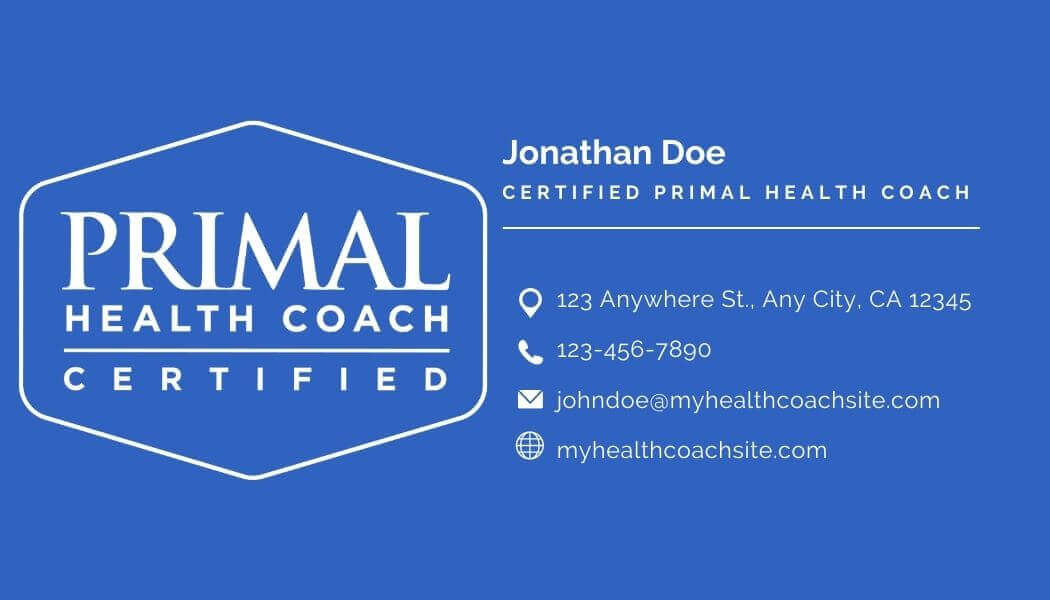
2. Vistaprint
Vistaprint is best known as a printing service, but they also provide an extensive directory of freely available business card templates. You can also upload your own graphics and logos and add these to an existing template.
How to Print Your Health Coach Business Cards
You’ve designed your business card, now it’s time to get them printed. Vistaprint and Canva both offer a variety of card materials and finishes for you to choose from depending on your budget and personal preference, including:
- Coated card – low quality, typically coated only on one side.
- Quality art board – thick, coated on both sides. Good business cards are usually printed on 80-pound cover stock.
- Textured – narrow ridges are indented into the textured card. Textured cards have a traditional appearance.
- Laminated – printed and sealed on both sides with a thin laminate substance. Laminate can have a matte finish (easy to write on), or a glossy finish (ultra shiny).
Stunning Health Coach Business Card Examples
Looking for design inspo? We’ve hand-picked the following 5 eye-catching Canva business card templates to inspire you. Each design elicits its own unique mood and feel. Which is your favorite?
1. Rainbow Reiki Business Card
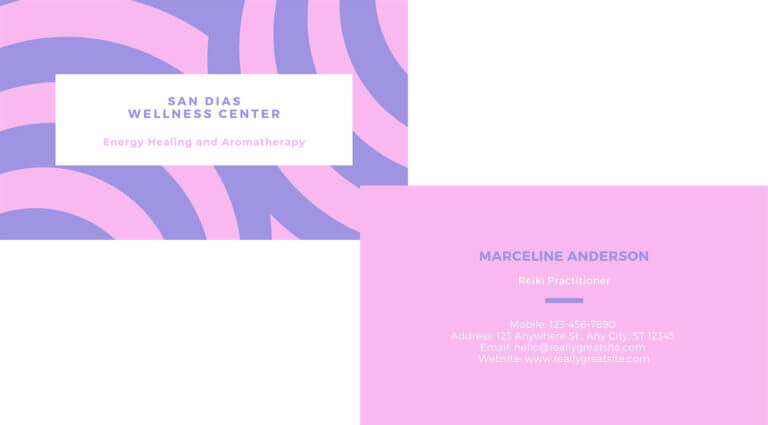
2. Colorful Floral Spa Business Card
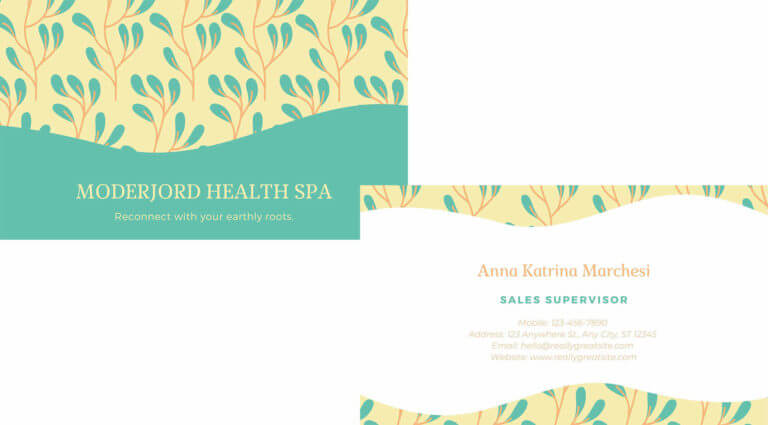
3. Minimal Boho Yoga Studio Business Card
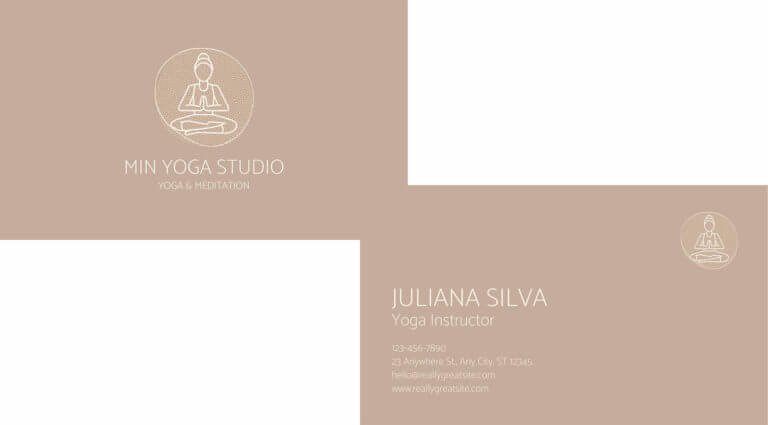
4. Colorful Shapes Reiki Business Card
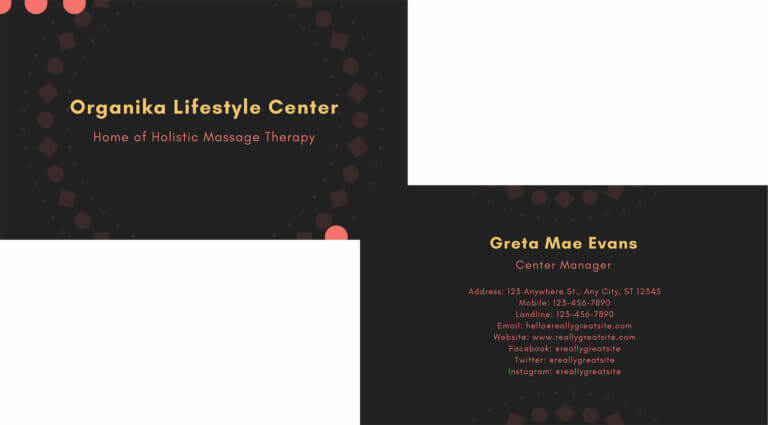
5. Olive Green Feminine Modern Beauty Clinic Business Card
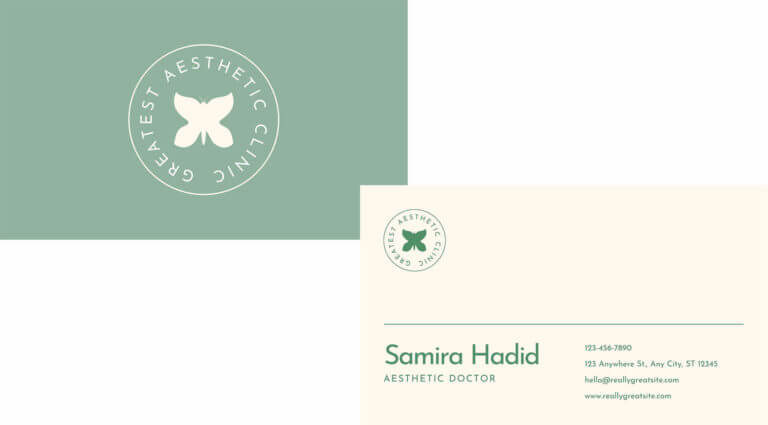
5 Common Business Card Mistakes to Avoid
Here’s a list of 5 common mistakes you should avoid when designing your health coach business cards:
- Card is too big. Make sure your business cards are small enough to fit in a pocket or a wallet.
- Dull and boring. You want your design to standout amongst your competitors.
- Poor quality printing or paper. You could have the best-designed card in the business, but if the finish is poor, then it’s going to have a negative impact on your potential client.
- Cluttered design. Make sure you leave enough white space and only include the essential elements on your cards.
- Unclear contact information. Make it easy for your prospective client to find your contact details, or you may find your card in the bin.
Recap
Whether you choose to design you own health coach business cards, or outsource to a graphic designer, here’s a summary of the 8 key elements you should include to make your health coach business cards irresistible:
- Full Name, Title and Credentials
- Coaching Specialization
- Business Name
- Logo
- Website URL
- Email Address/Phone Number/Social Media Tags
- Business Address/Business Location
- Tagline or Slogan
Now it’s time to for you to get creative with your own health coach business card design!
